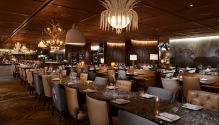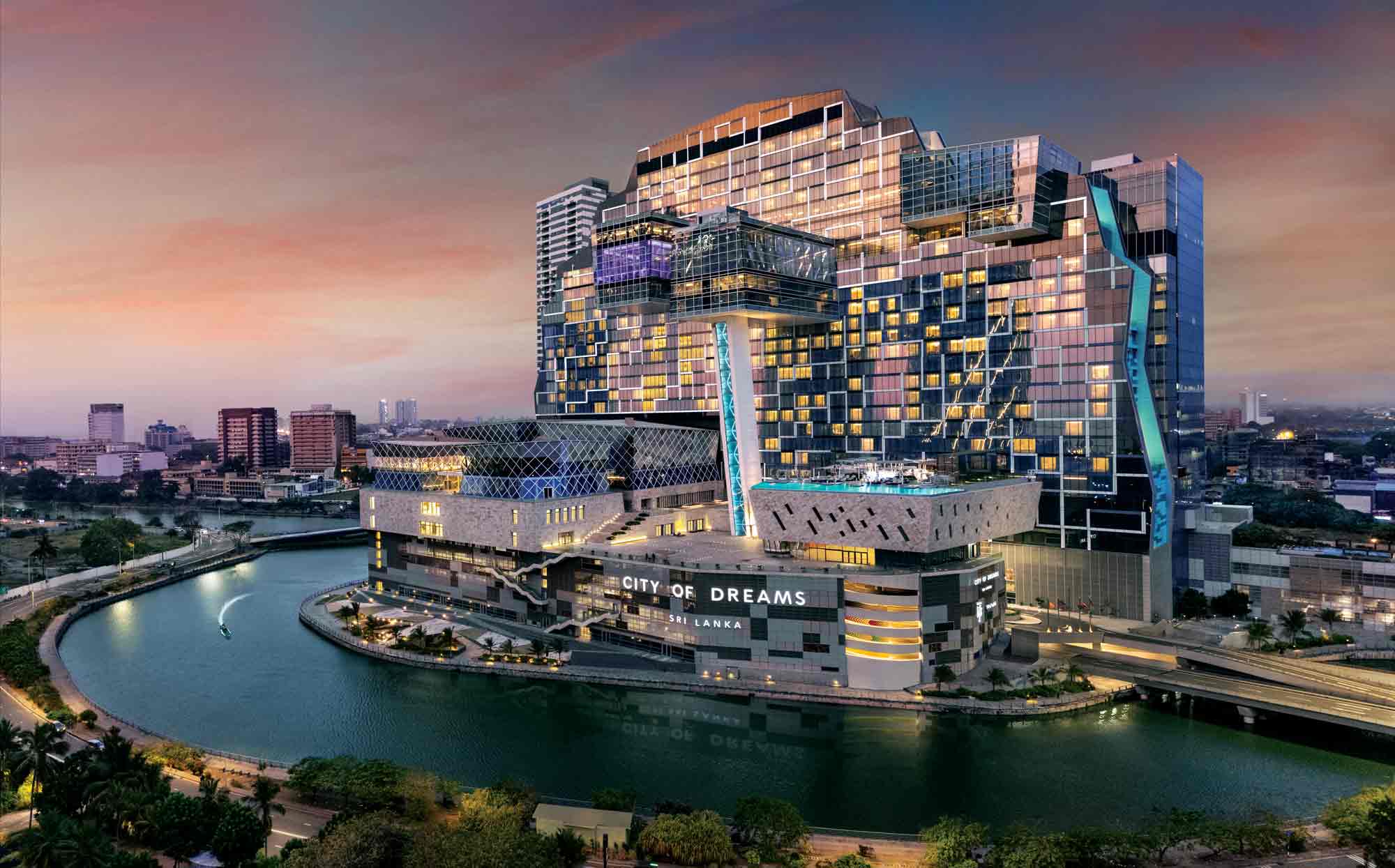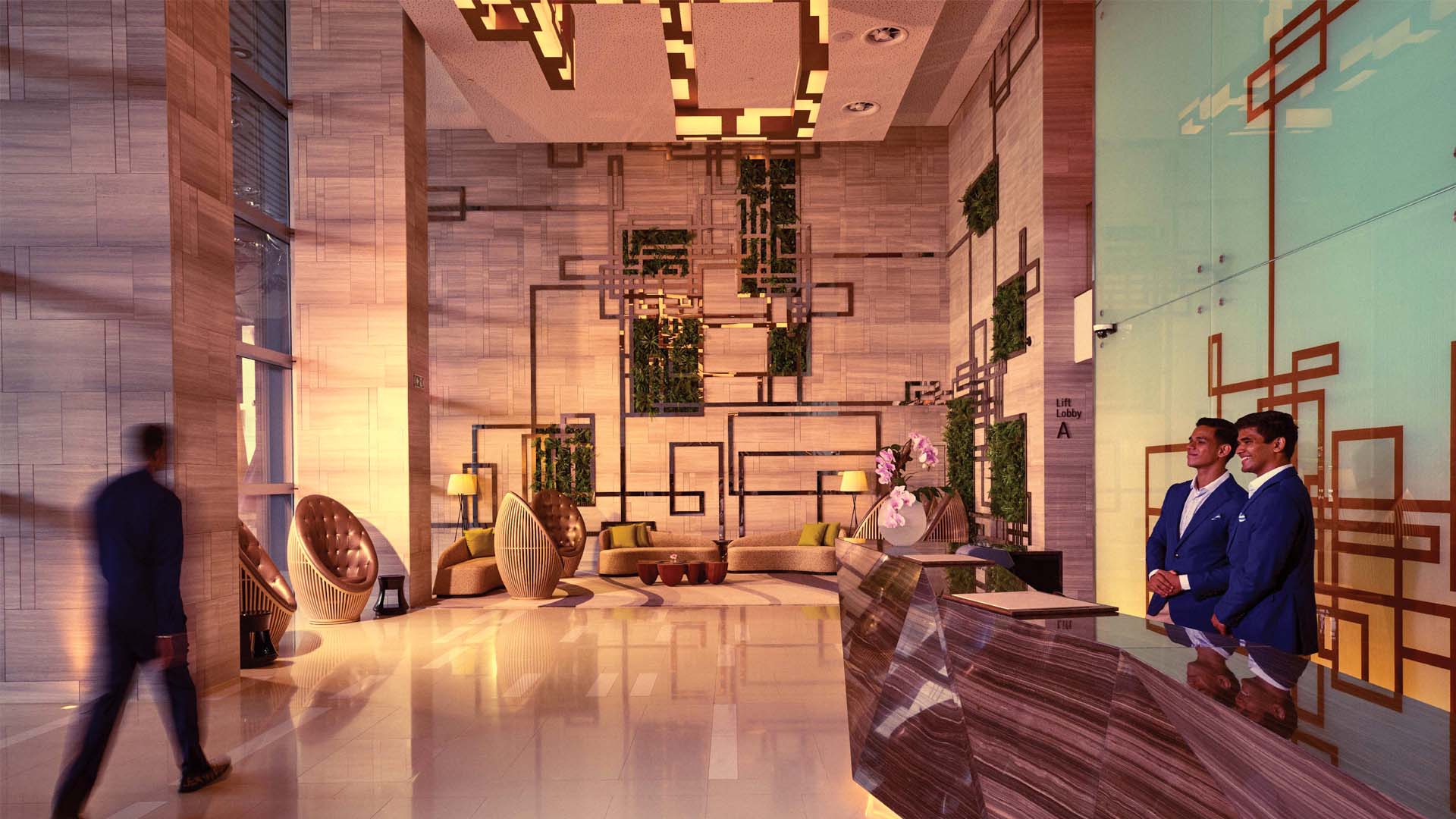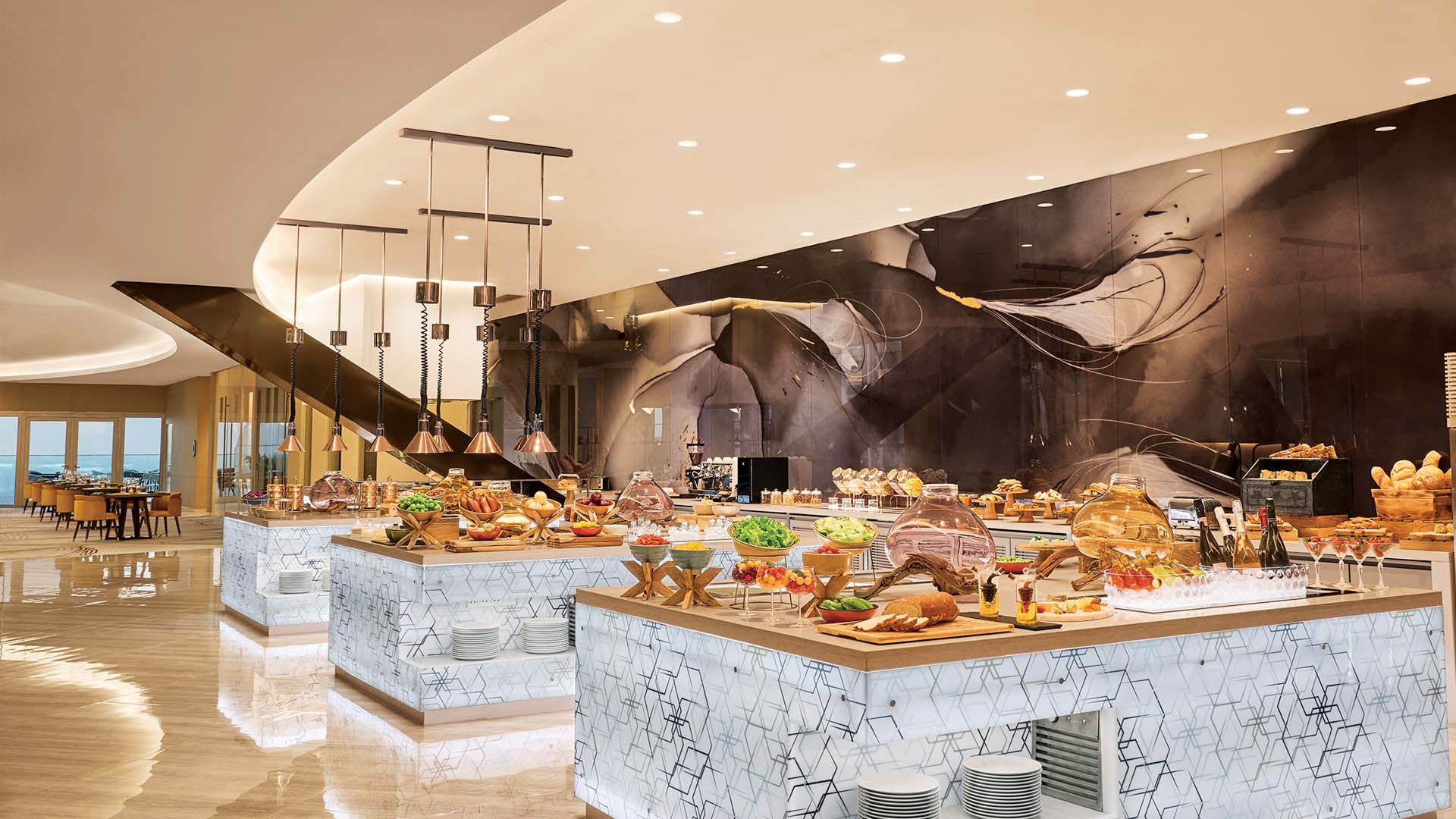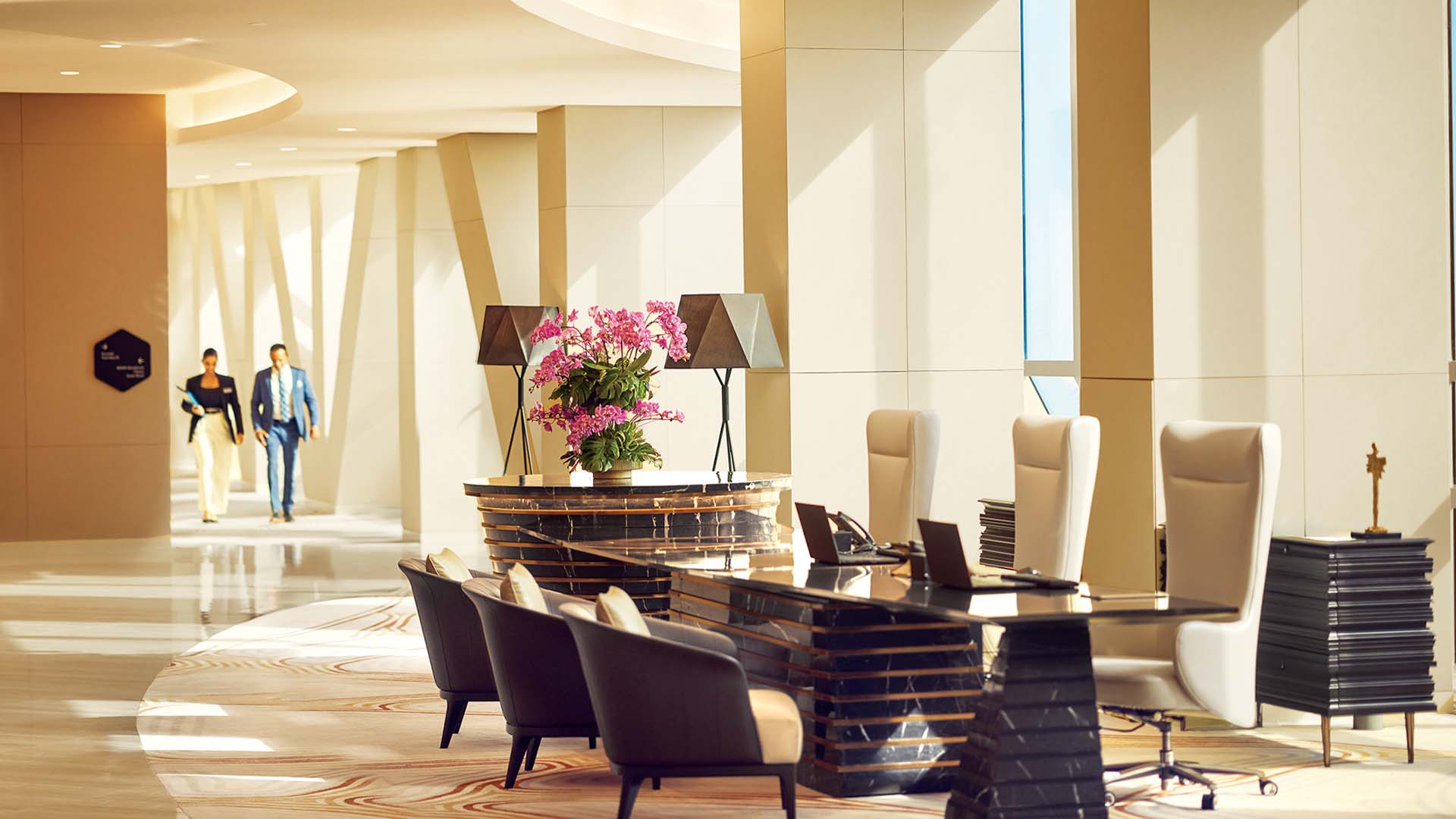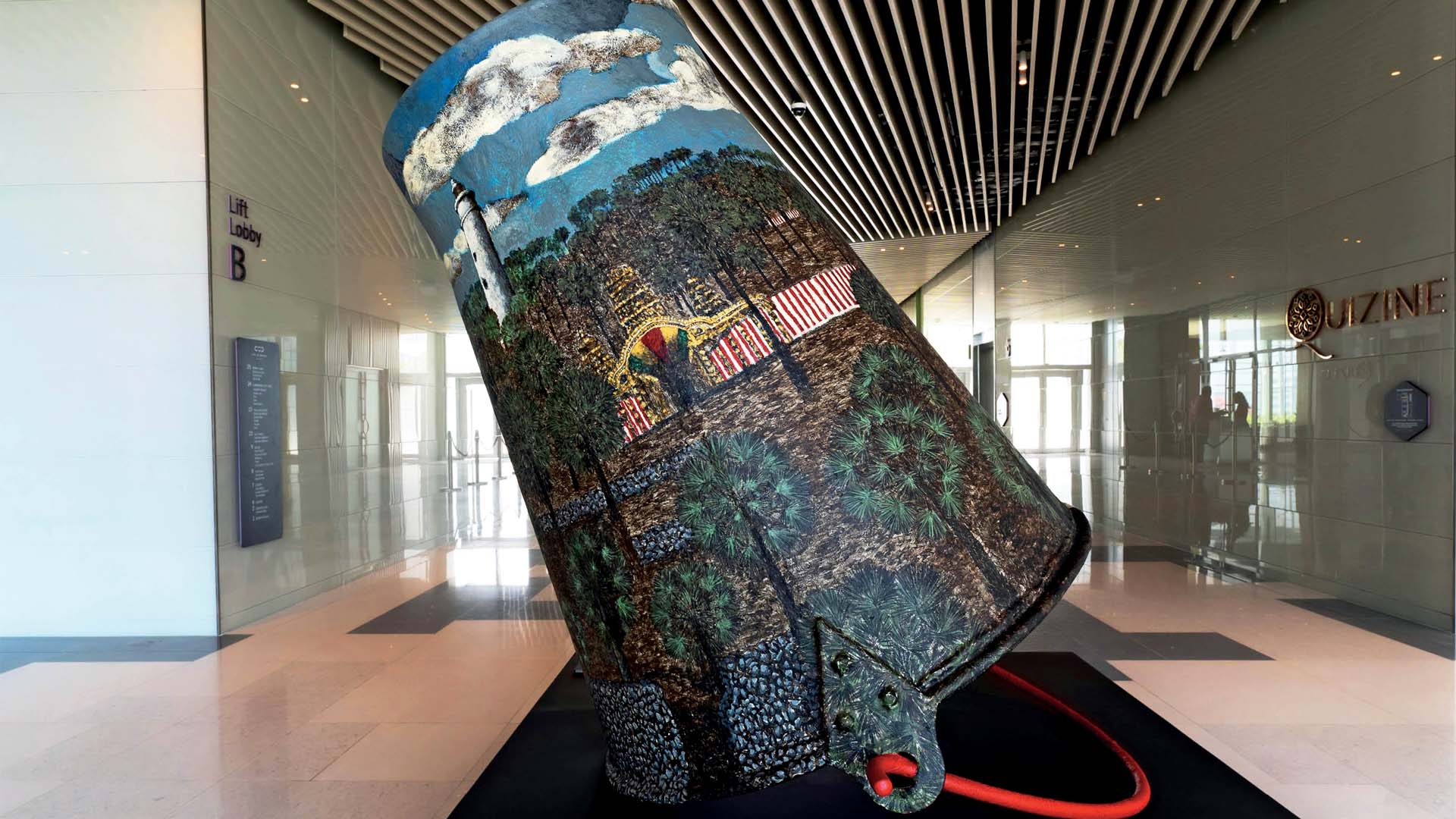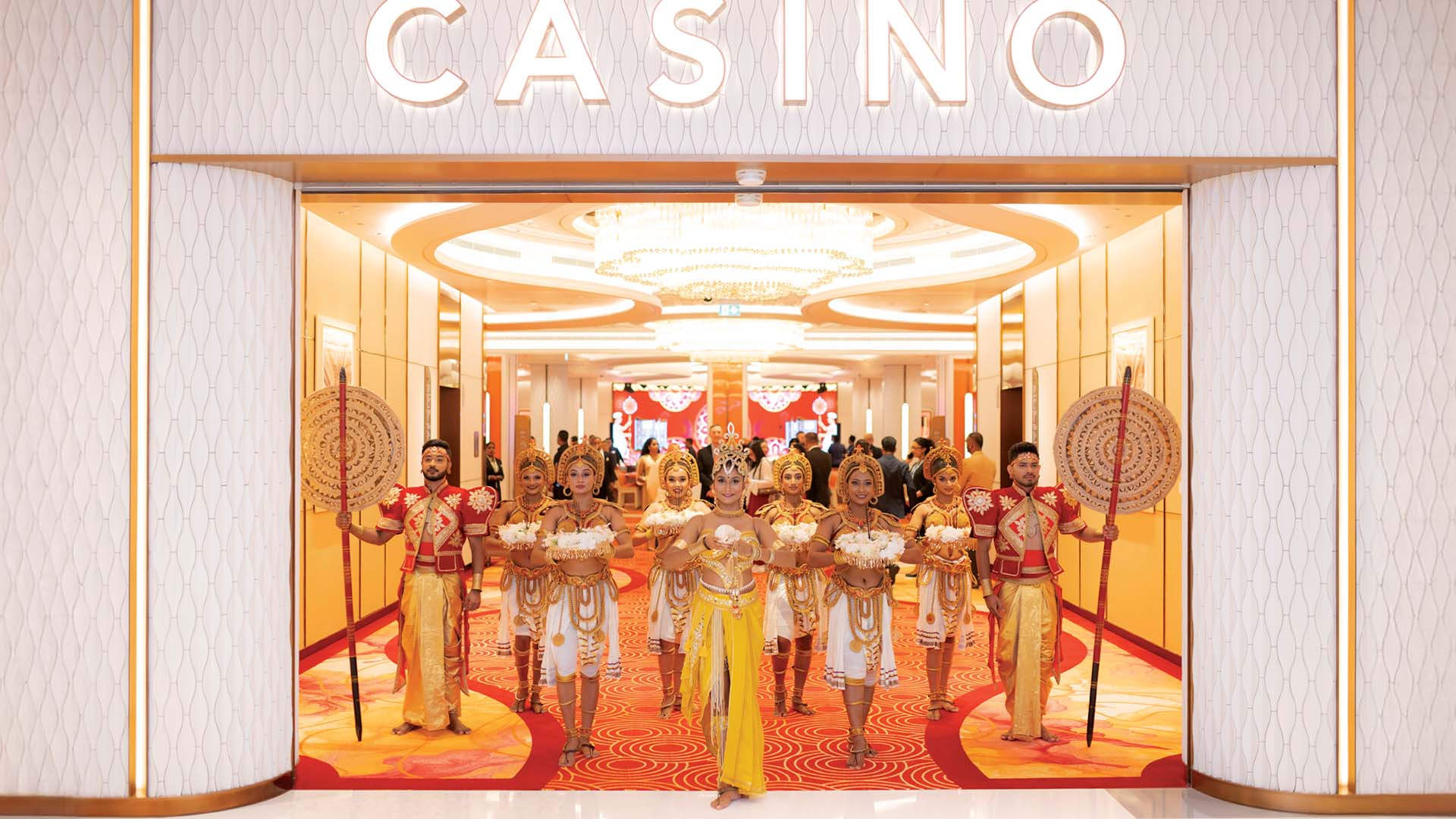Mega Dreams For South Asia
With a $1.2 billion price tag, 800 rooms, 17 restaurants, a luxury retail boulevard, and a world-class casino, Colombo’s newly opened City of Dreams marks the region’s debut on the global stage of mega integrated resorts.
By Suman Tarafdar
Mega integrated resorts are a popular feature that stand at the intersection of global travel and entertainment—think Marina Bay Sands in Singapore, Genting Highlands in Malaysia, Macau’s Cotai Strip, or Sun City in South Africa. South Asia recently joined this rarefied group with the opening of its first such resort in Colombo, Sri Lanka.
Twelve years in the making, the 800-room City of Dreams, which fronts the Galle Seaface, is a unique convergence of hospitality, entertainment, business, shopping, dining, and culture. With a price tag of over US$1.2 billion, it is the single biggest investment in the country. The project, spread over 4.5 million sq.ft., includes two hotels, Cinnamon Life (687 rooms) and Nüwa (113 rooms), a state-of-the-art casino and entertainment zone, 17 restaurants and bars curated by globally acclaimed chefs, a luxury retail promenade featuring designer brands alongside artisanal Sri Lankan boutiques, expansive event and MICE facilities, residences and offices.
Envisaged at a time when the nation’s economy is booming, City of Dreams is the product of John Keells Holdings and Melco Resorts & Entertainment (Melco), and is set to establish Colombo as a destination for conferences, exhibitions, and cultural festivals. While 155-year-old John Keells Holdings is the largest conglomerate company listed on the Colombo Stock Exchange, operating with over 80+ companies, Melco is a developer, owner, and operator of integrated resort facilities in Asia and Europe.
“This is a defining moment for Sri Lanka,” says Krishan Balendra, Chairperson, John Keells Group. “City of Dreams is the largest private investment in our country’s history—an ambitious national vision brought to life. More than a development, it is a world-class destination designed to catalyse economic growth, elevate our global profile, and help shape a modern, forward-looking Sri Lanka. This is not merely a physical development. This is a declaration of belief in Sri Lanka's future, in its resilience, and in the power of long-term vision. It is about showing the world and ourselves that we can compete, we can lead, and we can dream big.”
According to Lawrence Ho, Chairman and CEO of Melco Resorts & Entertainment, City of Dreams is truly a landmark for Southeast Asia. “A property that reflects the bold ambition and unwavering belief in Sri Lanka's potential to become a globally recognised luxury destination. Through our role in operating NÜWA, and the entertainment and gaming offerings, we are contributing to a destination that celebrates Sri Lanka’s unique identity while setting new standards for luxury and hospitality in South Asia.”
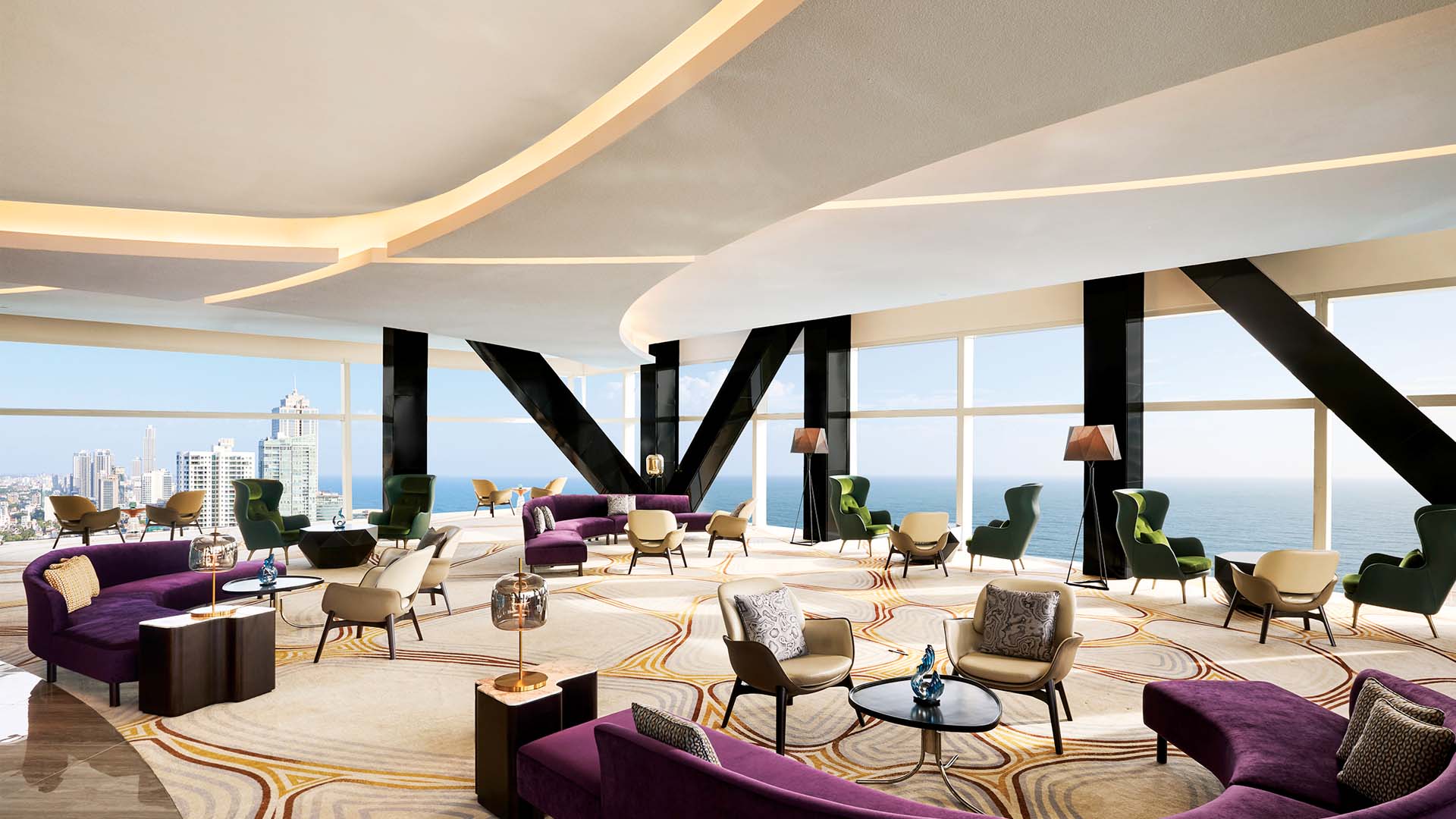
The crystal lounge at Nuwa is an upscale restaurant.
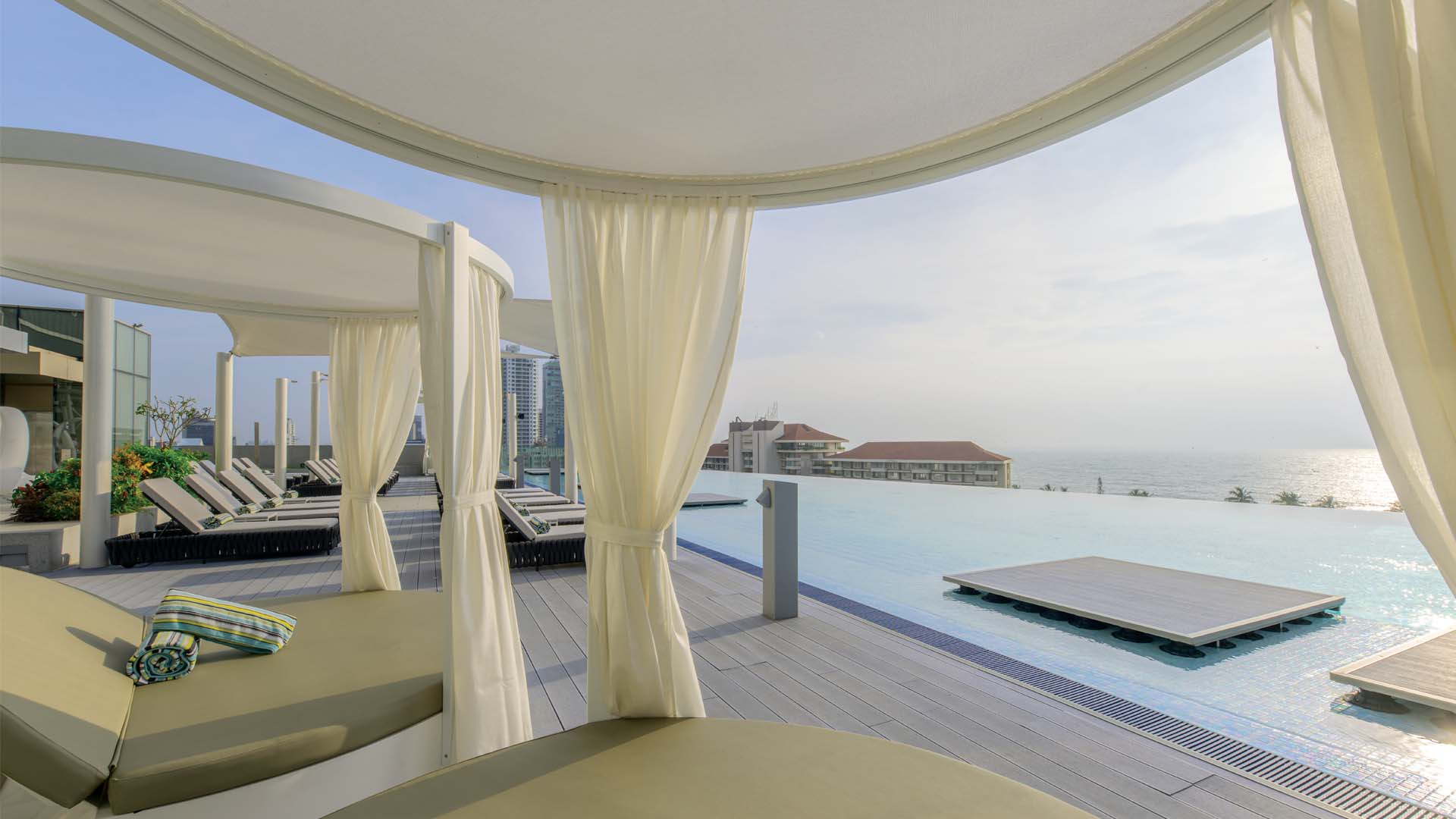
Dreams & Beats bar and infinity pool.
Can COD be India’s Macau?
That India is the primary target for COD becomes very clear in conversations with the top management. Explaining the genesis of the project, Balendra admits it has taken longer than envisaged. “When we conceived the idea, the war in Sri Lanka had just ended in 2009, and tourism was seen as a low-hanging fruit. You could see that tourism was going to grow substantially over the upcoming years. We wanted to develop something unique. Colombo didn't have large facilities for big weddings out of India, or conferences and corporate events. So, we wanted to build something that would cater to this segment, as well as something that's unique, like a world-class gaming experience.”
He is just as optimistic about the project. “We are very protective of the City of Dreams brand. The moment I saw the building, I thought this is truly an iconic architecture.”
Balendra is confident that in the medium term, “we will achieve our return targets on this property. You are seeing a strong growth in arrivals to Sri Lanka, and you have travellers looking for a different experience within close proximity to India. We can already see that. If you look at the number of corporate events that we have in the pipeline for the next six months, it's much more than what you would have typically seen in Colombo”. He points out that Cinnamon Life, which opened a few months earlier, is now not only the flagship for the Cinnamon Group, the largest hotel operator in the country, but is already the top-rated hotel in the city, commanding the highest rates.
India is going to be a focus market, stressed Balendra. “It has to be. I mean, it cannot not be the focus because it has got over a billion people. There are no integrated resorts within one to three hours' flight. Outbound from India is booming. India is where China was 20 years ago, and you have seen how the Chinese took over the world. Actually, the world is now preparing for the Indian traveller just the way it did for the Chinese who flocked to Louis Vuitton shops.” Ho points out that Colombo’s proximity to India strengthens its potential as a destination.
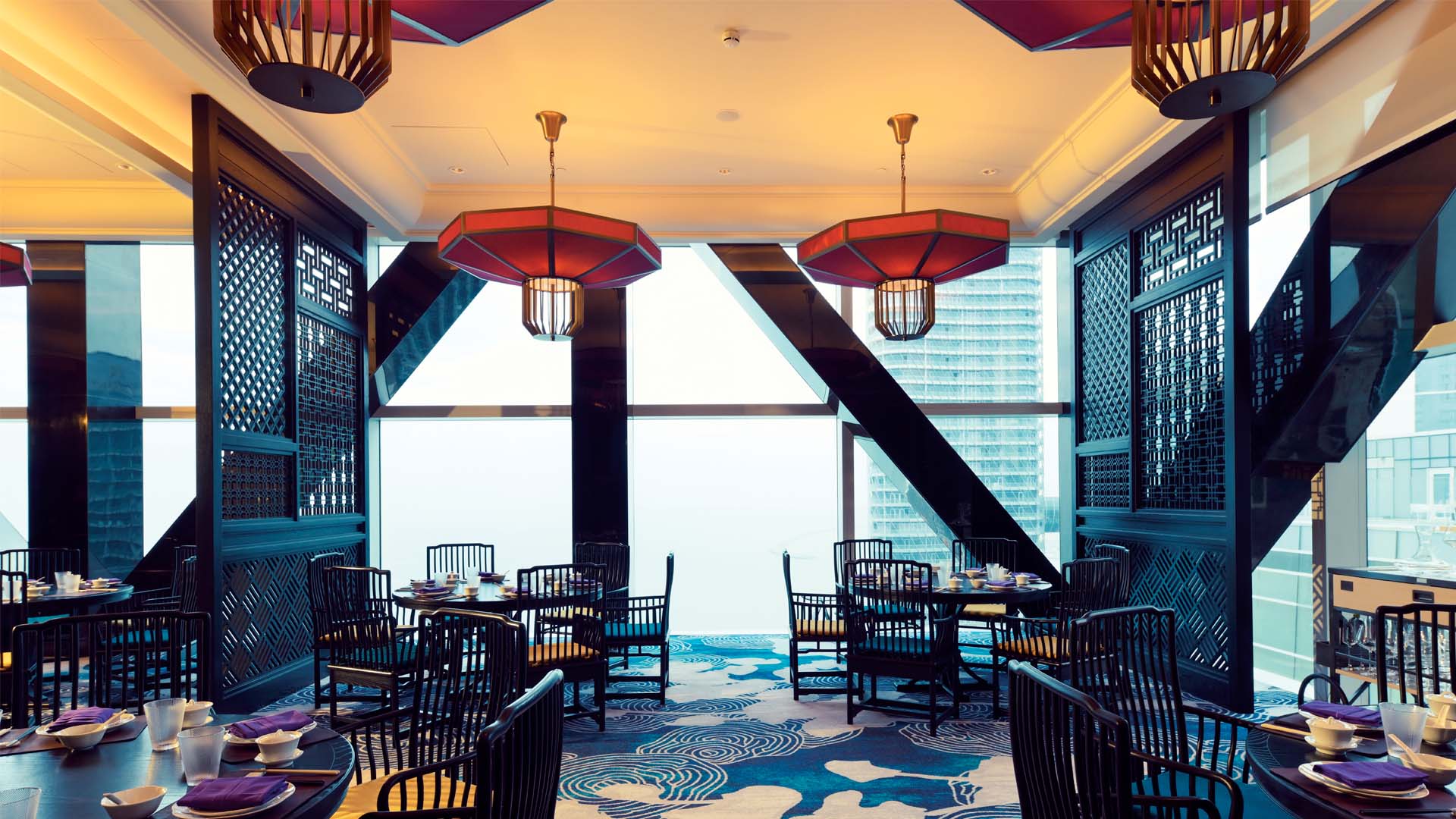
Another view of the Crystal at Nuwa Lounge that offers unparalleled views of the Arabian Sea.
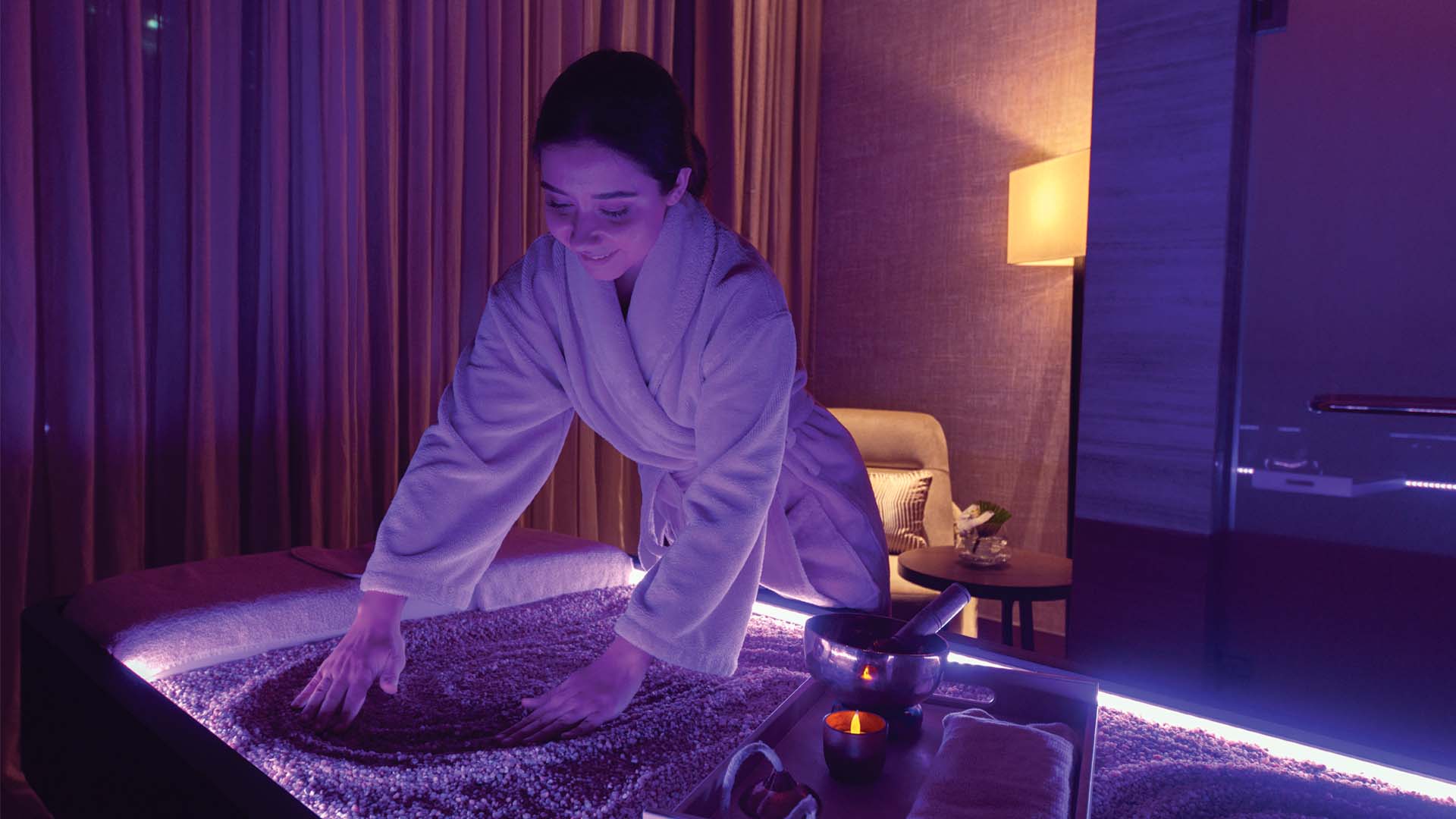
Kurundu at Cinnamon Life offers wellness, the Sri Lankan way.
City of Dreams—which sets new standards for luxury-—reflects the bold ambition and unwavering belief in Sri Lanka's potential to become a globally recognised luxury destination.
Lawrence Ho
Chairman and CEO, Melco Resorts & Entertainment, City of Dreams

Cinnamon already has multiple marketing networks in India, and plans to continue to market through those agents. The property is unabashedly targeting the inbound, with a multiplicity of source markets. The immediate focus is on travellers from India, South Asia, the Middle East, and beyond for corporate events, gambling, travel, and leisure travel. The casino is expected to have a lot of attention focused on it, and Indians—while still not displaying similar propensity as the Chinese do in Macau—do indulge in destinations such as Goa. Melco is expected to train and hire a substantial number of locals for the casino.
Sanjiv Hulugalle, CEO and General Manager, City of Dreams, Colombo, is just as upbeat about the prospects. “We don't just want to be the best hotel or resort or integrated project. We want to be the most loved. I think it's all about creating experiences, textures, and a place to truly have a connection to Sri Lanka. It's drawing new customers into Sri Lanka. I think that's the real core aspect because an integrated project is a very diverse experiential statement.”
Hulugalle, who left his country when he was 19, has come back to run this ambitious integrated project. “(For me) it is about bringing back some of the memories of the past in an iconic structure like this one, and looking to the future where we can say, ‘Hey, we can truly attract a new customer into Colombo’,” he smiles.
His focus? “The continuous focus is on telling the story of the city of dreams in Sri Lanka to the rest of the world, which needs to know about it.”
Cinnamon Life had to encapsulate the Colombo spirit—sea on one side and a city that is constantly evolving, the different ethnicities, and constantly shifting kinetic ideas.
James Balmond
Creative Director, Balmond Studio

The guard stone of Colombo
For any future visitor to Colombo, it will be difficult to miss the City of Dreams. Built as a bridge between the sea and the city, this ‘waterfront’ structure is massive, its exterior defying any existing rules of architecture. Or just shapes.
“While conceptualising the building, we thought that we had to encapsulate the spirit of Colombo—sea on one side and the city that is constantly evolving, the different ethnicities and constantly shifting kinetic ideas,” explains James Balmond, Creative Director, Balmond Studio. “The building has the Sri Lankan spirit, manifested in a more modern way. It is diverse and complex, and also very simplistic.”
The building itself redefines the parameters of possibility. The first sketch for Cinnamon Life—set-up of the famous Cinnamon Hotels & Resorts group—was conceived as a symphony of energy. “We desired an address to the ocean and the city, a welcome to a new Colombo. And the form had to be ‘open’, allowing energy to flow through, a focal point of attraction and expansion,” according to the architects. Local inspirations are everywhere—especially in the use of vertical guardstones (Muragala) and horizontal moonstones (Sandakada Pahana).
Built on a semi-circular site, the built area represents the land’s shape via an arc. As the architect of Cinema of Dreams, Cecil Balmond, puts it, “You can’t put Cinnamon Life in a definitive box. It jumps in and out. You just can’t classify it.” The entry driveway is U-shaped, just the start of the unpredictability and anticipation building within. The reception on Level 24, you discover, is conceived as a ‘street in the sky’. There are multiple levels of restaurants (remember—17 of them!). While Cinnamon Life occupies levels up to 24, the remaining levels are Nüwa, the second hotel in the complex.
What you get at first glance are the recesses and protrusions that create an ‘in and out’ rhythm. The sea-facing side has three horizontal structural projections—two cantilevers and a singular extruded form. Defying gravity with authority, each structure acts as a metaphor for infinite progression, whilst echoing the horizontal waves of the sea and the horizon. This façade is also ‘broken’ by a four-faceted retail complex that pays homage to the ‘stepped’ qualities of the main hotel form, as does the slightly more diminutive conference centre.
Extensions include four large external terraces, three swimming pools, a spa, and a gym. Pure cantilevers like the one that extends from levels 22 to 24 are breathtaking. Guests, especially architecture and design aficionados, need to plan extensive stays to appreciate the myriad marvels of COD.
Within the complex, art is effectively omnipresent. The portfolio includes both commissioned works by leading Sri Lankan artists and rotating works from partner galleries. The works are deeply evocative of the country. Paradise Lost by Priyantha Udagedara on Level 23 captures the instance before the coloniser tampered with the picturesque landscape and the destruction of the pristine wilderness. On the same level, you can’t miss a huge upturned bucket. That’s Gayan Prageeth’s Before Nineteen Eighty Three, which explores how everyday household objects are used for ethnic profiling and violence during the nation’s civil war. Another unmissable work is Shifting Shapes of the Informal Mind, a spinning top featuring a mix of vibrant colours, created as a tribute to Cecil Balmond.
Hulugalle says, “Art has also evolved, and you have young artists today looking at art through a very different lens. We have put a spotlight on art festivals, through which we celebrate these moments of texture from the past and bring it back. It's not just hung on walls, but it moves from wall to wall and moves from one time of the year to a different time of the year.” It is about trying to connect with the local elements and keeping it authentic, but fresh, he says. “The flowers across the hotel, for example, are locally grown. We also hire local musicians.”
Hulugalle’s passion for positioning this hotel at the acme of Colombo’s hospitality landscape is palpable. “This is an iconic building, and unlike anything in the Colombo landscape. One day, you could enjoy the art; the second day, you could have a great culinary experience, and you can even cook your own food, too. Or you can actually take a tuk tuk around the city and town and see some of the amazing sites, or just walk down to the oldest mosque right down at the doorstep of our property, where you can meet some amazing storytellers.”
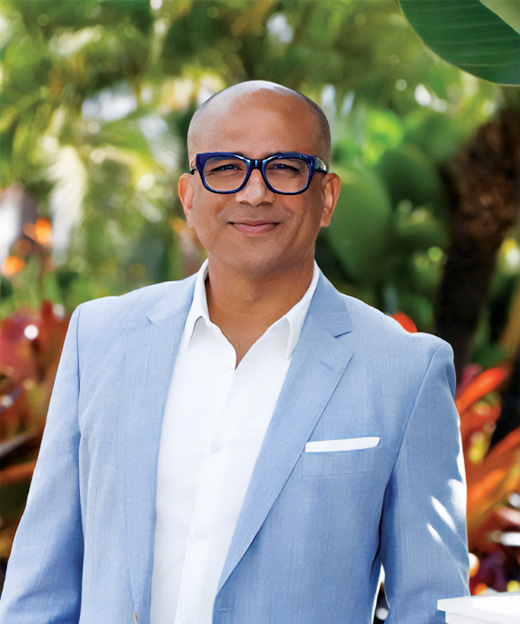
Sanjiv Hulugalle, CEO and General Manager, City of Dreams, Colombo.
We don't want to just be the best integrated project. We want to be the most loved. It is all about creating experiences, textures, and a place to truly have a connection to Sri Lanka.
Sanjiv Hulugalle
CEO and General Manager, City of Dreams, Colombo


















